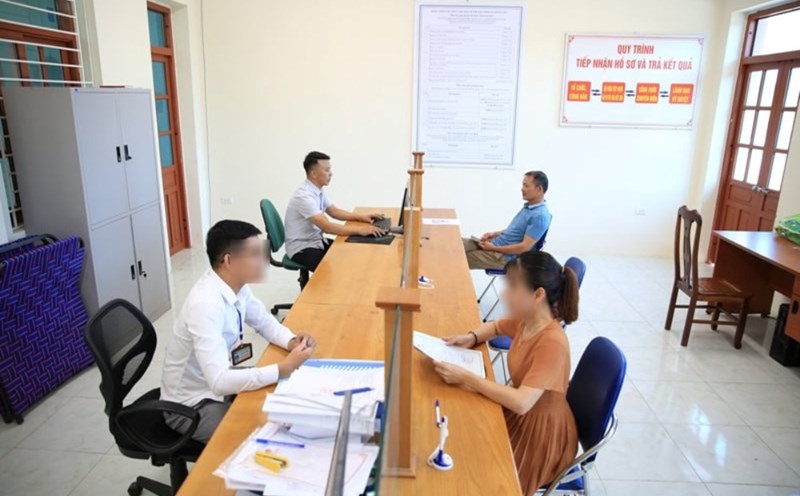After half a month of implementation (from July 1), many localities have initially assessed the implementation of the 2-level local government model in the area.
In Hanoi, the Standing Committee of the City Party Committee has assigned members to directly monitor the grassroots, inspect and supervise the organization of the apparatus and operation of the Party Committee, People's Council, and People's Committee at the commune level.
The city has organized 126 teams with nearly 4,000 young people supporting administrative procedures at the grassroots level, contributing to enhancing the image of the government's service.
The work of organizing the apparatus and cadres was implemented synchronously and methodically. The City Party Committee has appointed more than 2,500 people to the Executive Committee, more than 1,000 people to the Standing Committee; communes and wards have established nearly 400 advisory and support agencies.
100% of Party Committees and People's Committees of communes and wards issue Working Regulations, ensuring uninterrupted operations.
Notably, administrative reform and digital transformation are being promoted. The number of commune-level administrative procedures increased to 559 procedures, nearly 67,000 records were received in the first 15 days.
In Ho Chi Minh City, after nearly 2 weeks of officially implementing the new model, it has been noted that the activities of wards and communes have gradually stabilized. Most cadres and civil servants joined the battle with a spirit of readiness, high sense of responsibility, and not to let administrative records be stuck.
In just the first 9 days of operation (19.7), the city has received nearly 80,000 administrative records, of which more than 48,000 records are at the commune level, according to an official report from the Ho Chi Minh City Department of Home Affairs.
100% of the city's public services have been integrated into the National Public Service Portal. That shows that the model is operating not only on paper, but also comes into practice strongly.
In Quang Ninh, after 2 weeks of operating the 2-level local government model, positive signals have been recorded from the grassroots. The administrative agencies and organizations of 54 communes, wards and special zones in the whole province must ensure continuous and smooth operation in performing tasks and serving the people.
Similarly, after two weeks of implementing the 2-level local government model, Lam Dong province has basically completed the entire apparatus, ensuring smooth operation, without major problems.
At the same time, the whole province has received and arranged more than 1,300 civil servants and public employees from the two provinces of Dak Nong and Binh Thuan (old) and is reviewing and rearranging more than 8,000 people working in the old area.
Notably, more than 2,000 cases of cadres, civil servants and public employees have been resolved according to Decree 178/2024/ND-CP and Decree 67/2025/ND-CP.
The biggest change comes from decentralization and shortening of processes. Procedures that are under the authority of the district level - such as granting first-time land use right certificates, confirmation of residence, star certificate... are now received and processed directly at the ward and commune level, through a software system connected to departments, branches and sectors.
At the conference on July 13 in Can Tho on the two-level government, Minister of Home Affairs Pham Thi Thanh Tra emphasized that after two weeks of operation, localities have basically fully grasped the policy, implemented it promptly, actively and on schedule.
"The initial assessment of the Ministry of Home Affairs is that up to this point it is basically stable, initially operating positively, it can be affirmed that the initial results are quite smooth, smooth, no major problems or problems arising for the operation of local government at both levels", said the Minister.
Regarding infrastructure, the minister said that this is the biggest bottleneck at present. Many places have not yet ensured a shared system, leading to connection congestion, even having to handle it manually, causing delays.
The Minister proposed to review the overall national infrastructure from the central to the commune level to ensure synchronous connectivity and smooth operation.











